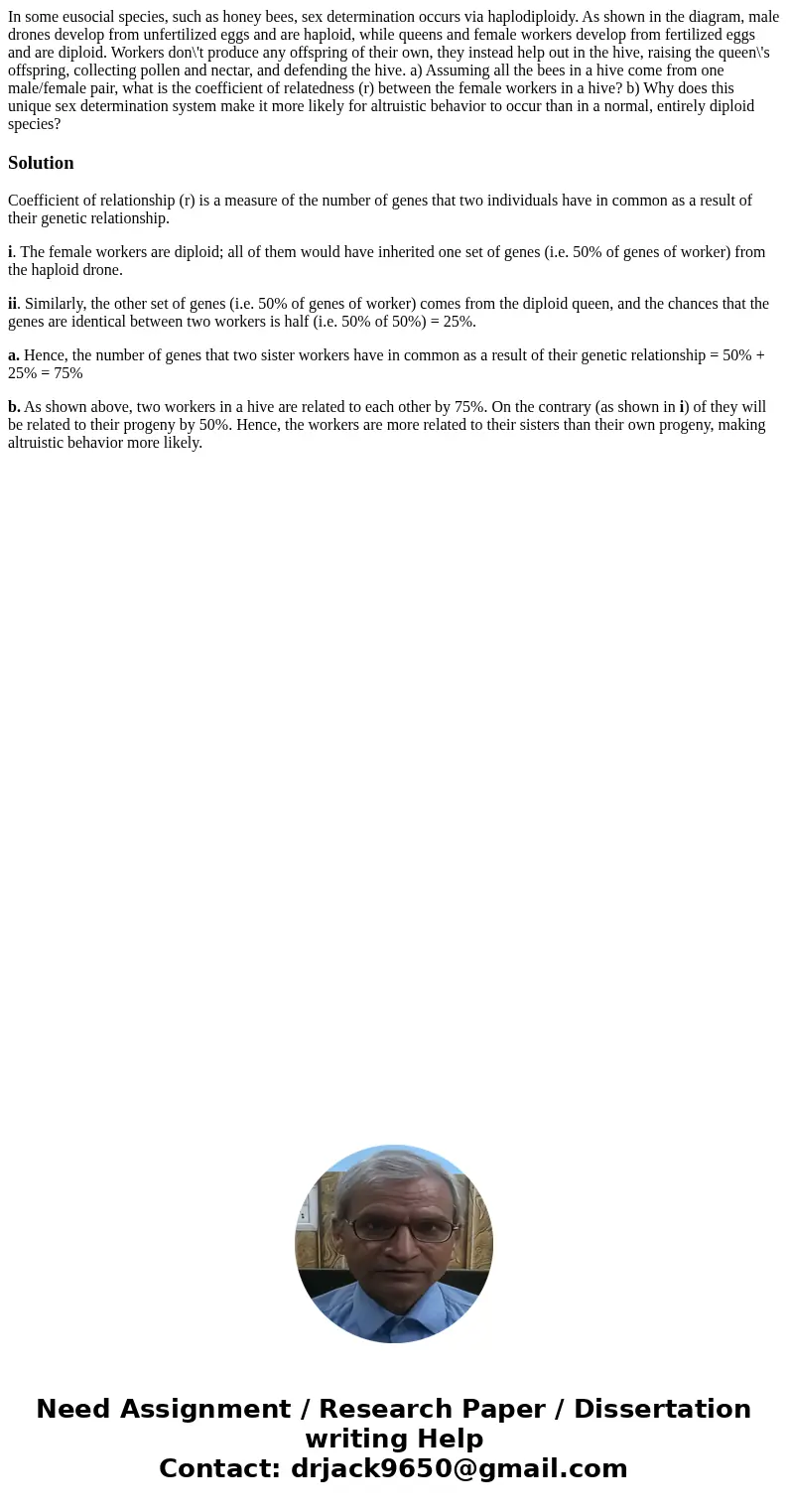In some eusocial species such as honey bees sex determinatio
Solution
Coefficient of relationship (r) is a measure of the number of genes that two individuals have in common as a result of their genetic relationship.
i. The female workers are diploid; all of them would have inherited one set of genes (i.e. 50% of genes of worker) from the haploid drone.
ii. Similarly, the other set of genes (i.e. 50% of genes of worker) comes from the diploid queen, and the chances that the genes are identical between two workers is half (i.e. 50% of 50%) = 25%.
a. Hence, the number of genes that two sister workers have in common as a result of their genetic relationship = 50% + 25% = 75%
b. As shown above, two workers in a hive are related to each other by 75%. On the contrary (as shown in i) of they will be related to their progeny by 50%. Hence, the workers are more related to their sisters than their own progeny, making altruistic behavior more likely.

 Homework Sourse
Homework Sourse